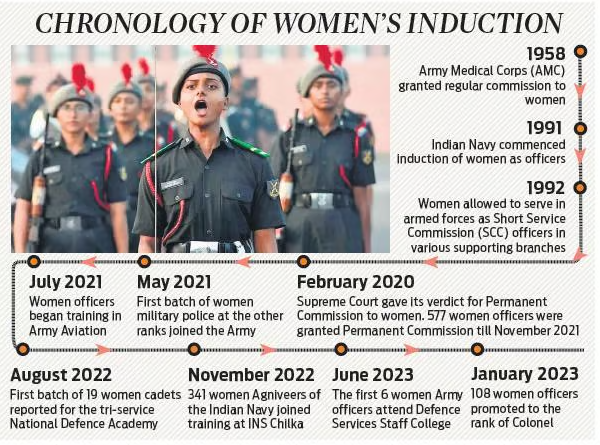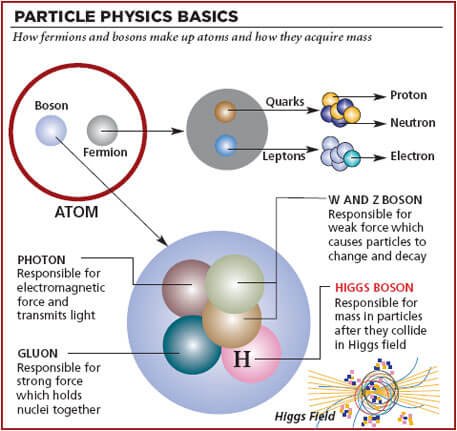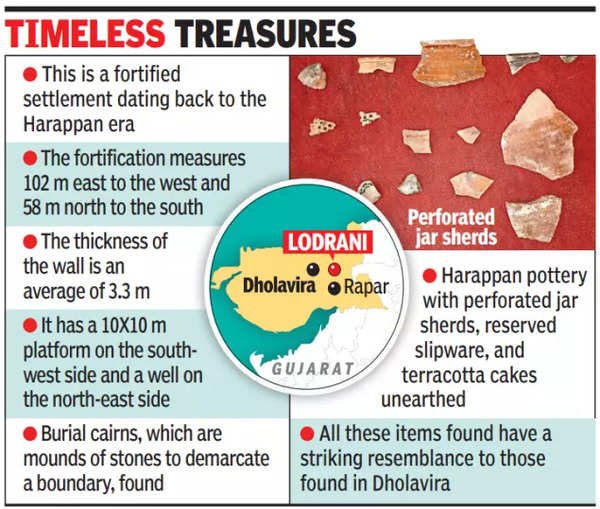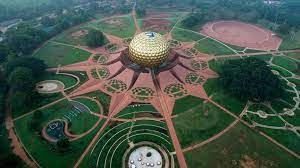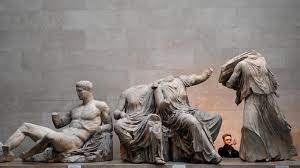
Current Affairs for UPSC Civil Services Exam – April 01, 2024
Subscribers of "Current Affairs" course can Download Daily Current Affairs in PDF/DOC
Subscribe to Never Miss an Important Update! Assured Discounts on New Products!
Must Join PMF IAS Telegram Channel & PMF IAS History Telegram Channel
{GS1 – MIH – Events} 100 years of Vaikom Satyagraha
- Context(IE): The non-violent agitation in Vaikom, Travancore, began on March 30, 1924 (100 years), marking the start of temple entry movements in India.
- This movement was significant for highlighting social reform alongside the nationalist movement and introducing Gandhian protest methods to Travancore.
- The Vaikom satyagraha was a remarkable movement that sustained itself for over 600 days.
History of Temple-Entry Movement in Travancore (1860-1940)
Context of Early 20th Century Travancore
- Travancore had a feudal and custom-ridden government system with caste-based discrimination barring lower castes from temples and surrounding roads (According to cultural anthropologist A Aiyappan). This is a classic example of Purity & Pollution.
- Some progress towards social change occurred in the late 19th century, including education for lower castes.
- Christian missionaries converted many lower-caste individuals who wanted to escape caste oppression.
- Maharaja Ayilyam Thirunal Rama Varma (1860-80) introduced free primary education for all, including lower castes.
- However, government jobs remained reserved for upper castes.
- In 1918, caste Hindus, a numerical minority, held 3,800 out of 4,000 jobs in the state’s revenue department. This meant that education itself did not act as a means of socio-economic advancement.
Role of T.K. Madhavan
- In the early 20th century, the Ezhavas, who were considered avarna Hindus, emerged as a significant educated elite.
- T.K. Madhavan, an Ezhava leader, initiated the temple entry issue in 1917 and advocated for direct action inspired by Gandhi’s Non-Cooperation Movement (1920).
- Opposition from upper castes and the Maharaja’s reluctance hindered progress until the Indian National Congress intervened.
|
Entry of the Indian National Congress (INC)
- Madhavan met Gandhi in 1921 and gained his support for a mass agitation to enter temples.
- In the 1923 INC session in Kakinada, the Kerala Provincial Congress Committee passed a resolution to address untouchability.
- This led to a large public campaign and a movement to open Hindu temples and public roads to lower castes.
Launch of Vaikom Satyagraha
- Vaikom was chosen as the first site for satyagraha, and the focus initially was on opening roads around the temple to lower castes.
- Protesters attempted to use forbidden roads daily from March 30 to April 10, 1924, resulting in arrests. Subsequently, they engaged in peaceful protests, fasting, and singing until September.
- Leaders like Periyar and C. Rajagopalachari came to Vaikom to offer support and lead the protesters. Hindus.
- In August 1924, the Maharaja of Travancore died, following which the young Maharani Regent, Queen Sethulakshmi Bai, released all prisoners.
Outcomes
- After the Maharaja’s death, a compromise was reached in March 1925, allowing access to three out of four roads surrounding the temple.
- In November 1925, diversionary roads were opened for lower castes, officially ending the satyagraha.
- The movement’s legacy included the Temple Entry Proclamation of 1936, which removed caste-based bans on temple entry and showcased the effectiveness of Gandhian civil disobedience.
Related Facts
|
{GS3 – IE – Employment} Declining Earnings of Salaried & Self-employed Indians
- Context (DTE): The India Employment Report 2024 highlights trends in real earnings for different types of employment in India from 2012 to 2022.
- Real earnings are inflation-adjusted.
Key Findings
Real Earnings Trends
- Real earnings for salaried workers declined annually from 12,100 rupees in 2012 to 10,925 rupees in 2022.
- Real earnings for self-employed individuals declined annually from 7,017 rupees in 2019 to 6,843 rupees in 2022.
- Real monthly earnings for casual workers increased annually from 3,701 rupees in 2012 to 4,712 rupees in 2022.
Quality of Employment
- The report suggests poor quality of employment generation in India from 2000 to 2022, indicated by declining real earnings for salaried and self-employed workers.
Minimum Wage Compliance
- Analysis shows a significant percentage of workers did not receive the minimum prescribed wages.
- 40.8% of regular workers and 51.9% of casual workers did not receive the minimum wage for unskilled agricultural work.
- 39.3% of regular workers and 69.5% of casual workers in the construction sector did not receive the minimum prescribed wage.
{GS3 – IE – Industry} Tamil Nadu’s Surge in Electronic Goods Manufacturing
- Context (TH): Tamil Nadu emerged as India’s largest exporter of electronic goods in FY23, contributing 30% of India’s electronic goods exports in FY24.
- Previously, Uttar Pradesh and Karnataka dominated electronic goods exports until FY22.
- The rise in Tamil Nadu’s contribution doubled the share of the electronic goods sector in India’s overall exports in recent years.
- Smartphones account for nearly 40% of India’s electronics exports, with most of them being exported from the Kancheepuram district in Tamil Nadu.
- Exports from Gujarat and Maharashtra, the other top five states, have stagnated in recent years.
- Industry experts attribute the rise in exports to the China-Plus-One strategy of global companies like Apple.
- This strategy led to contractors and suppliers of Apple, such as Foxconn, Pegatron, and Salcomp, contributing to the growth of Tamil Nadu as India’s electronic hub.
|
India’s Electronic Goods Market
- The U.S. and the UAE are the biggest markets for India’s electronic goods exports.
- Since FY21, the U.S. has been the primary destination for India’s electronics exports, and its share has increased significantly in recent years.
- Smartphones exported from Tamil Nadu played a major role in boosting India’s electronic goods exports, particularly to the U.S.
- The U.S. is also the largest importer of smartphones globally.
{GS3 – Infra – Initiatives} Projects in Arunachal Pradesh
- Context (TH): The Indian army is taking up many infrastructure projects in Arunachal Pradesh.
- Such projects have both military and civilian advantages, boosting tourism and quickening the Army’s movements.
Administrative demarcation in Arunachal as per Army
- Tawang district is part of the Kameng area, while the remaining part of the State is considered separate and was earlier referred to as the Rest of Arunachal Pradesh (RALP).
- Tawang and Kameng are under the Army’s IV Corps( headquartered at Tezpur). RALP is under the III Corps, which is based at Dimapur.
|
Developmental projects
- Vibrant Village Programme: Launched in Kibithoo (Arunachal) in 2023 to counter China’s model villages, Xiaokang (moderately prosperous) and located very close to the LAC.
- Operation Sadbhavna: A social welfare scheme spanning environment, education, and skills to generate employment (E.g., Kibithu Bakery by Aseem Foundation).
- Trans-Arunachal highway of 2400km, 92% already completed.
- Frontier highway: Work has commenced on a 1,800 km long highway. It will start from Bomdila in Arunachal’s west, pass through Nafra, Huri, and Monigong villages, and end in Vijaynagar, near the Indo-Myanmar border, cutting through the thick Arunachal forests.
- PM Gati Shakti project: A 3000km road and numerous tracks are being constructed in Arunachal to ensure last-mile connectivity to the Army.
- Helipads: All Seven Valleys now have helipads that can be used by the Air Force’s CH-47F(I) Chinook heavy-lift helicopters.
- Troops and artillery deployment: Changed Order of Battle (ORBAT) while relieving some battalions from insurgency operations to LAC. Artillery guns — M777 Ultra-Light Howitzers, 105mm Indian Field Guns, IG-716 rifles, Negev light machine guns, Sako TRG-42 sniper rifles, tactical drones, sensors, and other weapons and equipment have been inducted here.
- Battle of Walong 1962 memorial: In 1962, Indian Army halted advancing People’s Liberation Army soldiers for 27 days, forcing them to commit their reserve division from the Tawang sector to Walong.
- Lohit River bridges: Three key bridges of 80-tonne capacity are being constricted on the Lohit River.
- Seema Darshan project: State government, with support from the Army, has approved 12 tourist circuits. Religious tourism to Kepang La, Pasang Sonam Tso Lake, and Taksang Gompa, as well as trekking, are also being facilitated.
- Telecom connectivity: Airtel and BSNL are upgrading connectivity under the Universal Service Obligation Fund (USOF) to enable 4G connectivity. Earlier, only Chinese telecom signals were there.
Lohit river
|
Universal Service Obligation Fund
|
{GS3 – S&T – Cyber Security} Job frauds in Cambodia
- Context (TH): The union government, along with Cambodian authorities, has rescued about 250 Indians from cyber fraud and fake online recruitment scams.


- Many such agents operating in Cambodia, Laos, and Myanmar have alleged Chinese links.
- Government has issued precautionary advisories for such travellers, warning them about such scams.
{GS3 – S&T – IPR} Over 60 products get GI tag
- To date, around 635 products in India have been given the GI tag, the first of which is Darjeeling tea.
Products that bagged GI tag
Products from Assam
| Products |
Images |
Specifications |
| Asharikandi terracotta craft |
|
Unique for artistic skill, quality of Hiramati, climatic conditions and age-old tradition of Kumbhakaras (potters) of Asharikandi (Village in Dhubri, Assam). |
| Pani Meteka craft |
|
Crafts and decorative items like baskets, mats, laptop bags, and tiffin bags are made using Water hyacinths. Eco-friendly use of troublesome water hyacinths. |
| Sarthebari metal craft |
|
Sarthebari is home to the bell metal industry. It is an alloy of copper and tin. Used for domestic and religious purposes. Craftsmen (Kahar or Orja) still use old tools to burn and shape metal. |
| Jaapi |
|
Conical headgear from Assam. It is made from tightly woven bamboo and/or cane and tokou paat (Trachycarpus martianus) a large, palm leaf. Traditionally, plain jaapis were used by ordinary people in Assam and ornate decorative jaapis by the royalty and nobility. |
| Mishing handloom |
|
Weaving art practised by Mising community women. Mekhela chador is a traditional woman’s attire — to gift their daughters at the time of marriage. |
| Bihu dhol |
|
Crafted from a single piece of quality wood into a barrel shape, this dhol is used in Bihu dance, central to Rangali Bihu celebrations, marking the Assamese New Year. |
| Bodo Dokhona |
|
The traditional attire of Bodo women covers the whole body from the chest region to the legs by wrapping one round at a time over the waist (Like a saree). |
| Bodo Eri silk |
|
Known as fabric of peace or ahimsa (non-violence), it comes from the silkworm Samia ricini, which feeds mostly on the leaves of the castor plant (Ricinus communis) and cassava. |
| Bodo Jwmgra |
|
A traditional scarf used by Bodo women to cover the upper portion of their body. |
| Bodo Gamsa |
|
Boro male traditional attire. Covers the portion from the waist to the knee by tying it around the waist. Can be different colours but Green with white (in border) is the most common. Compulsory to wear while worshipping God and for the Boro bridegroom. |
| Bodo Thorkha |
|
A musical instrument (bamboo clapter) |
| Bodo Sifung |
|
Traditional musical instrument of the Bodo people of Assam. A large bamboo flute with five holes in contrast to the six holes north Indian flute. |
Products from Uttar Pradesh
| Products |
Images |
Specifications |
| Banaras Thandai |
|
A drink made by blending milk with a nutritious mix of nuts, seeds and spices. First introduced as an offering to the Shri Kashi Vishwanath deity on the occasion of Mahashivaratri, Rangbhari Ekadasi, and Holi. |
| Banaras Tabla |
|
Pandit Ram Sahai developed Benares tabla gharana.
Famous players: Anokhelal Mishra , Nanhku Maharaj, Kishan Maharaj. |
| Banaras Shehnai |
|
It is made of wood, with a double reed at one end and a metal or wooden flared bell at the other end. It is blown on auspicious events, similar to South India’s nadaswaram. Famous player: Ustad Bismillah Khan |
| Banaras Lal Bharwamirch |
|
Big fat red chillis pickle stuffed with spices and chilli powder, unique for its flavour. |
| Banaras Lal Peda |
|
Traditionally, it is made from khoa obtained from a mixture of cow and buffalo milk. The characteristic brown-red colour developed during heat processing due to the caramelisation of khoa along with sugar. |
Products from Tripura
| Products |
Images |
Specifications |
| Pachra-Rignai |
|
A traditional dress worn on special occasions. |
| Matabari Peda |
|
A sweet preparation is offered in the form of bhog or prasada at the Tripura Sundari temple. |
Products from Meghalaya
| Products |
Images |
Specifications |
| Meghalaya Garo Textile |
|
Weaving by women of the Garo tribe. It is often linked to rituals. |
| Meghalaya Lyrnai Pottery
(Khiew-Ranei) |
|
Made using black clay mixed with serpentine stone. |
|
Meghalaya Chubitchi |
|
Traditional alcoholic beverage of Garo tribe. Consumed during festive occasions such as Wangala (harvest festival), Do.si Do.doka (wedding festivities) and religious rituals. |
{GS3 – S&T – ISRO} Pushpak
- Context (IT): ISRO successfully conducted the second landing experiment with its Reusable Launch Vehicle, Pushpak, on March 22, 2024.
- Pushpak, inspired by the Ramayana, aims to launch missions to space and return like American shuttle missions.
Need for Pushpak
- ISRO aims to democratise space access and reduce costs using indigenous technology.
- ISRO targets reducing the cost of launching a kilogram of payload from $12,000 – $15,000 to $500 – $1,000 per kilogram.
- This involves making systems recoverable and reusable and adopting more efficient propulsion systems, such as air-breathing rockets.
- The Pushpak mission is a part of Isro’s broader strategy to cut space access costs by 80%.

Key Areas of Focus in the RLV Program
- Powerful engine: ISRO employs a scramjet engine to reduce vehicle mass and cost.
- The scramjet engine, unlike traditional engines, uses the vehicle’s high speed to compress incoming air, eliminating the need to carry a heavy oxidiser.
- This will reduce not only the liftoff mass of the vehicle but also the cost.
- Surviving re-entry: ISRO tests heat-resistant materials and re-entry profiles to ensure the vehicle survives the intense heat generated by hypersonic travel. Because Safeguarding Pushpak during its fiery return to Earth’s atmosphere is crucial.
- Safe landing: Autonomous landing is crucial for precise and safe landings on all three gears.
Milestones achieved
- ISRO successfully tested its scramjet engine on August 28, 2016, using hydrogen as fuel and atmospheric oxygen as an oxidiser.
- A test flight in May 2016 validated the RLV’s design, reaching 65 km altitude and re-entering the atmosphere at hypersonic speeds.
- The RLV Landing Experiment (LEX) on March 22, 2024, showcased the vehicle’s autonomous landing capability.
To know more about the Pushpak & Reusable Launch Vehicle Technology Demonstrator (RLV-TD) Programme, visit > Pushpak
{Prelims – Envi – Species} Senna Spectabilis in MTR
- Context (TH): The forest department is removing the highly invasive tree Senna spectabilis from Mudumalai Tiger Reserve (MTR).
- Introduced to the landscape by private estates in MTR as ornamental trees.
- Earlier, the Madras High Court had ordered the tree’s removal due to its impact on local ecology in the Mudumalai and Sathayamangalam Tiger Reserves.
- Belongs to the legume family (Fabaceae), native to South and Central America.
- It is also known as the golden wonder tree or popcorn tree due to its bright yellow flowers, which bloom during the summer months.
- Medicinal uses: Treatment for ringworm and skin diseases, effective against food-borne pathogens, traditional medicines for epilepsy, constipation, insomnia, and anxiety.
- Useful for paper pulp manufacturing.
Mudumalai National Park, Tiger Reserve, Wildlife Sanctuary
- Location: North-western side of the Nilgiri Hills (Blue Mountains) Nilgiri district.
- It shares its boundaries with the states of Karnataka and Kerala.
- Vegetation: Tropical moist deciduous, dry deciduous and dry thorn forests.
- Fauna: Elephant, Bengal tiger, leopard, bonnet macaque, sloth bear, sambar, Indian giant squirrel.
- Avian Major Fauna: Indian white-rumped vulture (CR) and India Vulture (CR).
- Threats: Tourism and invasive species such as Lantana
{Prelims – In News} Dams of Tamil Nadu
- Context (TH | TH | TH): Recent news highlighted the water levels in dams like Mullaperiyar, Vaigai, Mettur, and Papanasam.
Mullaperiyar Dam
- It is a gravity dam situated on the Periyar River in Thekkady, Idukki district, in Kerala.
- Although the dam is located in Kerala, it is operated and maintained by the neighbouring state of Tamil Nadu.
- The operational rights were handed over to Tamil Nadu according to a 999-year lease agreement made during British rule.
- It is located on the Cardamom Hills of the Western Ghats.
- The dam is built at the confluence of the Mullayar and Periyar rivers.
- The dam’s purpose was to divert the waters of the west-flowing River Periyar eastward to the arid rain shadow regions of the Theni, Madurai, Sivaganga, and Ramanathapuram districts of Tamil Nadu.
- The Periyar National Park is located around the dam’s reservoir.
|
Vaigai Dam
- The Vaigai Dam is built across the Vaigai River in the Theni district of Tamil Nadu, southern India.
- It is a hydroelectric gravity dam.
- It was built to meet the drinking water needs of Madurai and its surrounding areas.
Mettur Dam/ The Stanley Reservoir
- The Mettur Dam is one of the largest dams in India located across the Cauvery River.
- The dam receives inflows from its own catchment area, the Kabini and Krishna Raja Sagara Dams in Karnataka.
- There is a park at the base of the dam called Ellis Park.
- Upstream from the dam is Hogenakkal Falls.
- It provides irrigation and drinking water facilities for more than 12 districts of Tamil Nadu.
- The Mettur Dam is frequently in the news due to the Cauvery water dispute between the States of Tamil Nadu and Karnataka.
Papanasam Dam
- The Papanasam Dam, also known as Karaiyar Dam, is located on the Western Ghats of Pothigai hills.
- It is constructed on the Thambirabarani River.
- The dam is used to irrigate 86,107 acres of paddy fields in Tirunelveli and Tuticorin districts.
- The place is considered holy because it is said that Lord Shiva and Parvati appeared before Saint Agasthiyar here. The Agasthiyar Temple is built here to commemorate this visit.

{Prelims – In News} Empathic Voice Interface (EVI)
- Context (IE): Hume, a New York-based company introduced ‘first conversational AI with emotional intelligence’.
- It is an empathic AI that can interpret emotional expressions and come up with empathic responses.
- It is called the Empathic Voice Interface (EVI), which is essentially an API powered by its proprietary empathic large language model (eLLM).
- It understands & emulates tones of voices and word emphasis to optimise human-AI conversations.
For more details, visit > Artificial Intelligence.
{Prelims – PIN India} Javadhu Hills
- Context (TH): Jawadhu Hills are facing a water shortage for wild animals this summer.
- Also Jawadhi, Jawadhu Hills. These are an extension of the Eastern Ghats.
- This range separates Vellore and Tiruvannamalai districts of Tamil Nadu.
- These hills are bisected into eastern and western sections by the Cheyyar and Agaram rivers, tributaries of the Palar.
- The hills consist of bluish-grey granites.
- Important places: Beemanmadavu waterfalls (Bheemam Falls), Kavalur Observatory.





![PMF IAS Environment for UPSC 2022-23 [paperback] PMF IAS [Nov 30, 2021]…](https://pmfias.b-cdn.net/wp-content/uploads/2024/04/pmfiasenvironmentforupsc2022-23paperbackpmfiasnov302021.jpg)























